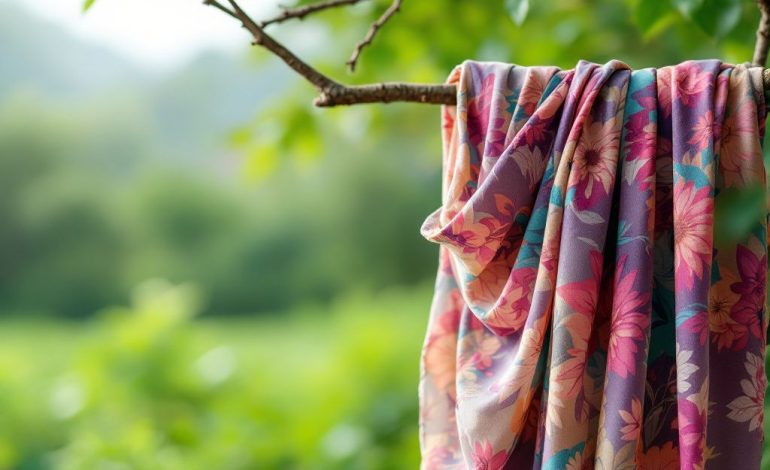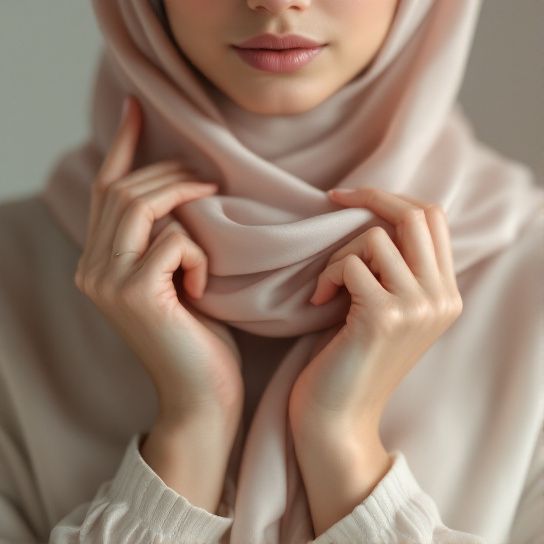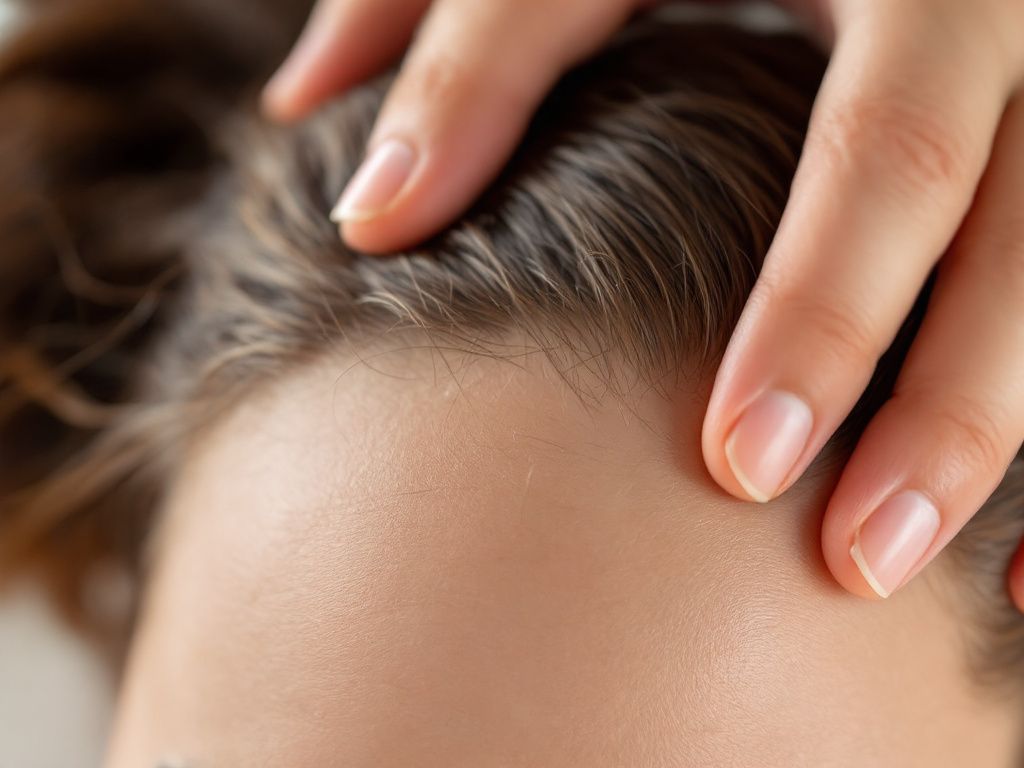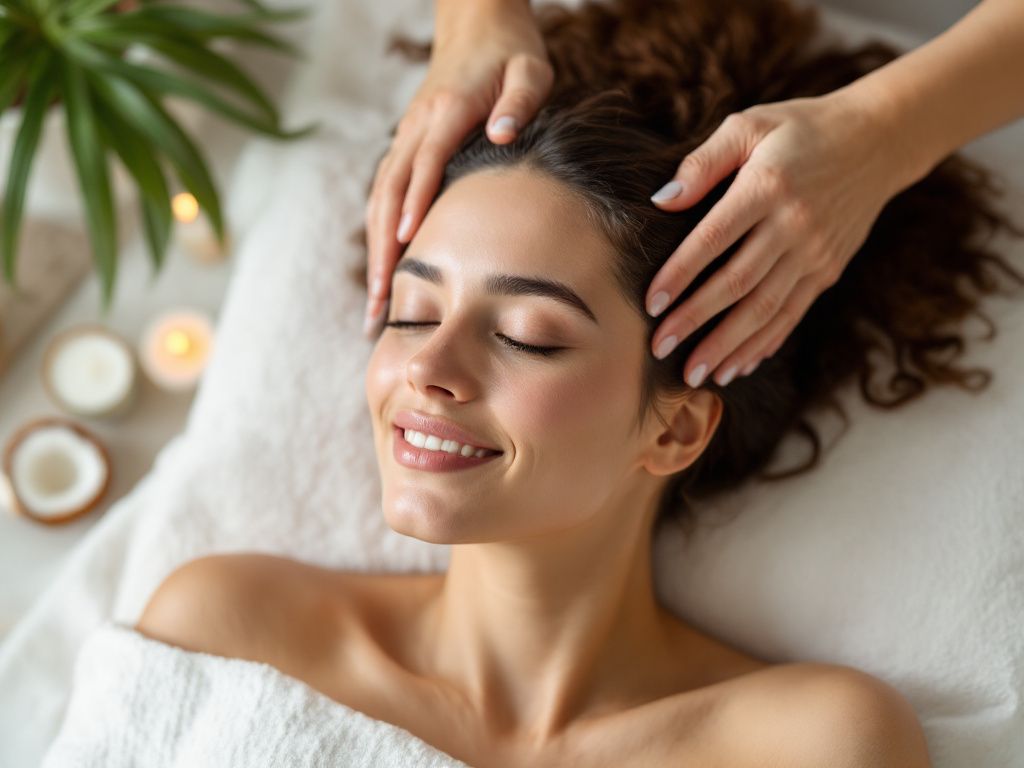Sustainable Hijab Care: An Eco-Friendly Guide to Keeping Your Hijabs Fresh

Hey there, hijab enthusiasts! 🌿 If you’re like me, you probably have that favorite hijab—or maybe a whole collection—that you love so dearly. But have you ever paused and thought, “Am I taking care of these in a way that’s both effective and gentle on the environment?” You’re not alone if that’s crossed your mind.
The good news is there’s a way to keep your hijabs looking fabulous and fresh without compromising our sweet planet. Let’s dive into some sustainable hijab care tips that not only preserve your collection but also let you wear them with an eco-clean conscience. Cool, right?
Embrace Eco-Friendly Washing
Let’s start with washing, a crucial piece in the hijab care puzzle. Fast fashion may have taught us that it’s okay to wash your clothes after every wear, but trust me, that’s hardly necessary with hijabs. In fact, over-washing can damage the delicate fibers.
🌀 Use Cold Water
Switching to cold water is a quick win for you and the earth. It’s a simple switch that drastically lowers energy consumption. Plus, cold water is gentler on fabric fibers, which translates to your hijabs maintaining their color and texture longer. Sure, there might be a stubborn stain or two that insists on getting a hot water treatment—but save those for a rare occasion. Cold water usually does the trick.
🧼 Choose Mild, Eco-Friendly Detergents
Harsh detergents can be the villain in your hijab drama. Swap them with plant-based or eco-friendly detergents. These alternatives are free from nasty chemicals that can break down fibers over time. Some brands even offer detergent strips that dissolve into powerful cleaners—no waste, no fuss.
Okay, confession. I once thought eco-friendly meant less effective, too. But give it a try, and you’ll see they work just as well as their chemically-laden counterparts, sometimes even better.

Avoid the Dryer Like a Pro
Let’s talk about drying. I know tumbling hijabs in the dryer sounds convenient, but let’s be real: it’s a shortcut to send them straight to Dullville. Air-drying isn’t just an “okay” alternative—it’s the best choice for maintaining their shape and feel. Plus, it cuts down on carbon emissions.
☀️ Master the Art of Sun Drying
Find a sunny spot, unless your hijab is sensitive to sunlight, in which case, seek shade. Lay them out flat or hang them to prevent that funky lint and preserve their original sheen. Is there anything better-looking than hijabs swaying gracefully in the breeze? I think not.
✋ Handle With Care When Wringing
And hey, when you need to wring them, be gentle. Excess force can twist and warp them. Opt for a slow, squeezing motion, letting that water out without going too rough.
Stain Removal, The Environmentally Happy Way
Life is one big beautiful mess, and stains? They’ll happen, but you don’t need toxic solutions to deal with them.
Mix Your Own Concoctions
For most mild stains, a mix of water and vinegar often does the trick. It’s a cleaning combo your grandma probably used, and for good reason—this blend is ace at dealing with odors and stains. Additional options include using baking soda paste for tougher marks; apply it, let it sit, and blot away with a damp cloth.
Be Gentle on Delicate Fabrics

For silk hijabs or other delicate materials, dab the stain gently. Rubbing can make matters worse, spreading the stain and breaking fibers. Patience, dear friends.
Eco-Smart Storage Solutions
Now, once your beautiful hijabs are clean, let’s store them in style, shall we?
🎽 Fold vs. Hang
Folding can prevent creases for some fabrics while hanging suits delicate materials like chiffon. Just make sure hangers don’t deform them—opt for soft, rounded hangers. Take a mix-and-match approach depending on the fabric.
📦 Use Sustainable Organizers
Organizers made from bamboo or recycled materials not only help keep everything in its place naturally but add that rustic, thoughtful aesthetic. Plus, included more sustainability in our lifestyles matters, even in the small things like storage.
Sustainable Enhancements for a Prolonged Life Cycle
Every now and then, a repair session can keep your hijabs in top-notch shape. Sew on that lost bead. Fix that tiny tear. A stitch in time, right?
Seek out natural threads if you want to go all-in on sustainability. You’ll find easy-to-follow tutorials online if you’re not quite sure how to patch up your hijabs. Patching them up yourself can be incredibly satisfying too!

Repurpose and Recycle
Admit it, no matter how obsessively clean you are, some hijabs just reach their farewell date. Before tossing them away, question if they can start a new life—could they become a headband, lining, or even a nifty cleaning cloth?
When it’s truly time to bid goodbye, seek textile recycling centers. Keeping them out of the landfill loop benefits nature more than you think.
Listen to Your Hijabs
Yes, that’s a thing. Every fabric speaks its language, and understanding what your hijabs need can make all the difference. Feeling a little worn after a harsh winter? Perhaps they need a softer wash cycle or an extra dash of TLC. Repeated washing made colors fade unnecessarily? You might want to consider color-saving solutions available.
Check the tags of your fabrics. They’re like that small-town friend who knows everybody’s business—revealing crucial care information? You bet.
Bringing Mindfulness to Hijab Care
Sustainable hijab care is just as much about the “how” as the “why.” Think of it as a tangible start towards reducing your footprint. Every gentle wash, air-dry session, or natural stain remedy adds to this wondrous web of small actions, drawing us closer to a more eco-friendly lifestyle.
So, come join this gentle and green path. Your hijabs will thank you. Your wardrobe will thank you. The Planet will thank you.
Endlessly more resources and greener products await you out there. Exploring them can become a passion of its own. Enjoy it all, even the small joyful imperfections. Just remember every step gets us closer to the harmonious balance we strive to achieve with our beautiful surroundings. Now, go flaunt that stunning hijab, crafted beautifully, cared for sustainably. You got this!
Each time you accommodate these small changes into your routine; you imprint awareness into your lifestyle. Who knows—your conscientious acts might just inspire others around you to adopt similar practices. 🌍
Frequently Asked Questions
How often should I wash my face mask to prevent maskne?
To prevent maskne, it is crucial to wash your face mask regularly. For fabric masks, wash them after every use, similar to how you would wash your underwear[2][3][4]. Disposable masks should be tossed after each use to prevent the buildup of bacteria and other contaminants[3][5>.
What type of skincare products are best for preventing maskne?
For preventing maskne, use skincare products that are oil-free or noncomedogenic. These products, such as gentle cleansers, moisturizers, and sunscreens, help prevent clogged pores and reduce the risk of acne. Look for products containing salicylic acid or benzoyl peroxide for their acne-fighting properties[1][3][4>.
How can I reduce friction and irritation caused by wearing a face mask?
To reduce friction and irritation, choose a mask that fits well and is made from breathable fabrics like cotton or bamboo. Loosen the mask straps, use pads under the straps, or consider a headband-style mask to minimize friction. Taking brief breaks to remove the mask and allow your skin to breathe can also help[2][3][5>.
What are some additional tips to prevent maskne while wearing a face mask?
In addition to regular mask washing and using the right skincare products, avoid touching your face, skip makeup or use noncomedogenic makeup, and moisturize your skin to keep it hydrated. Also, limit the use of active ingredients like retinol or benzoyl peroxide during the day when wearing a mask, and consider using a topical antimicrobial cream to prevent bacterial buildup[1][3][4>.
References







